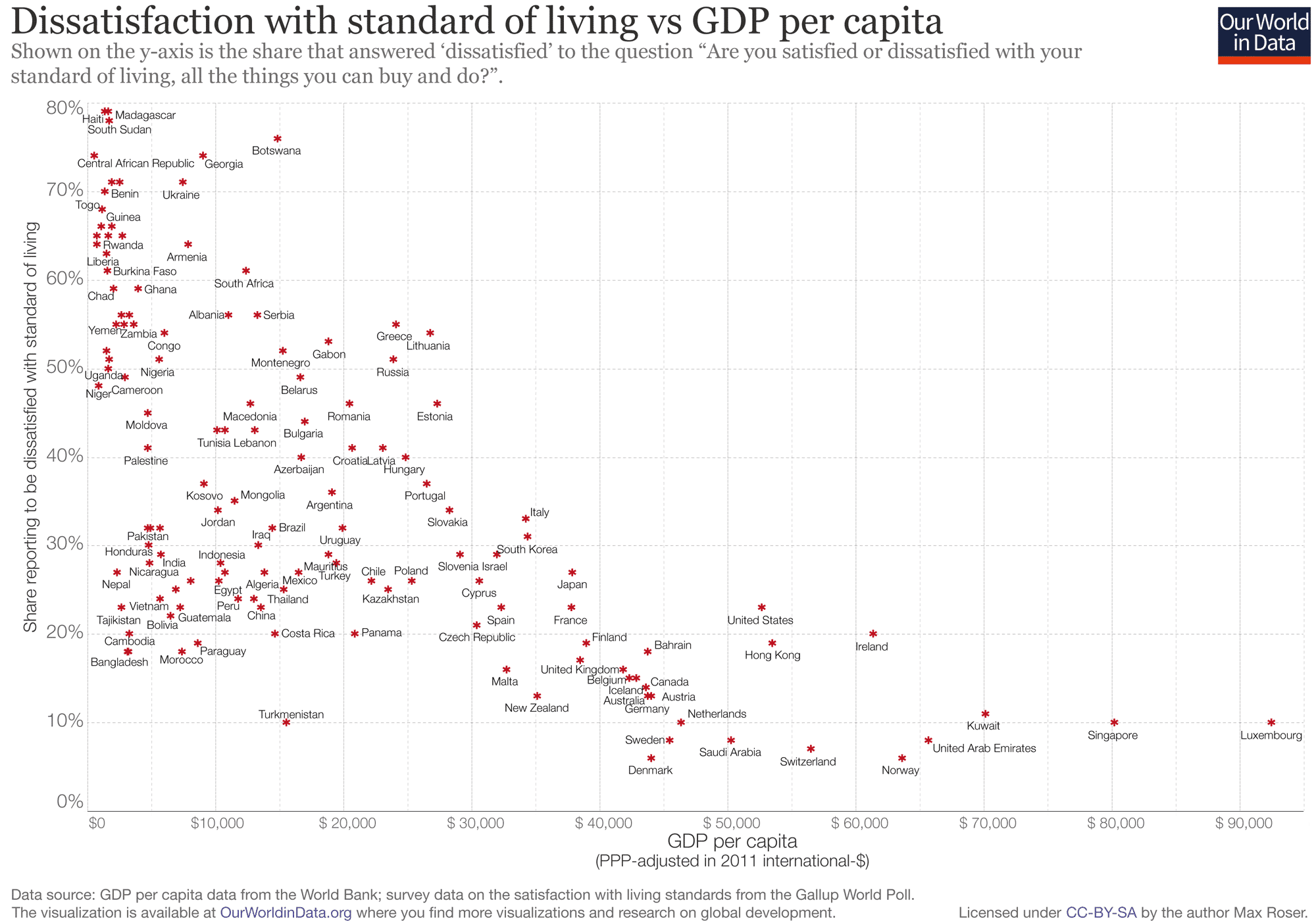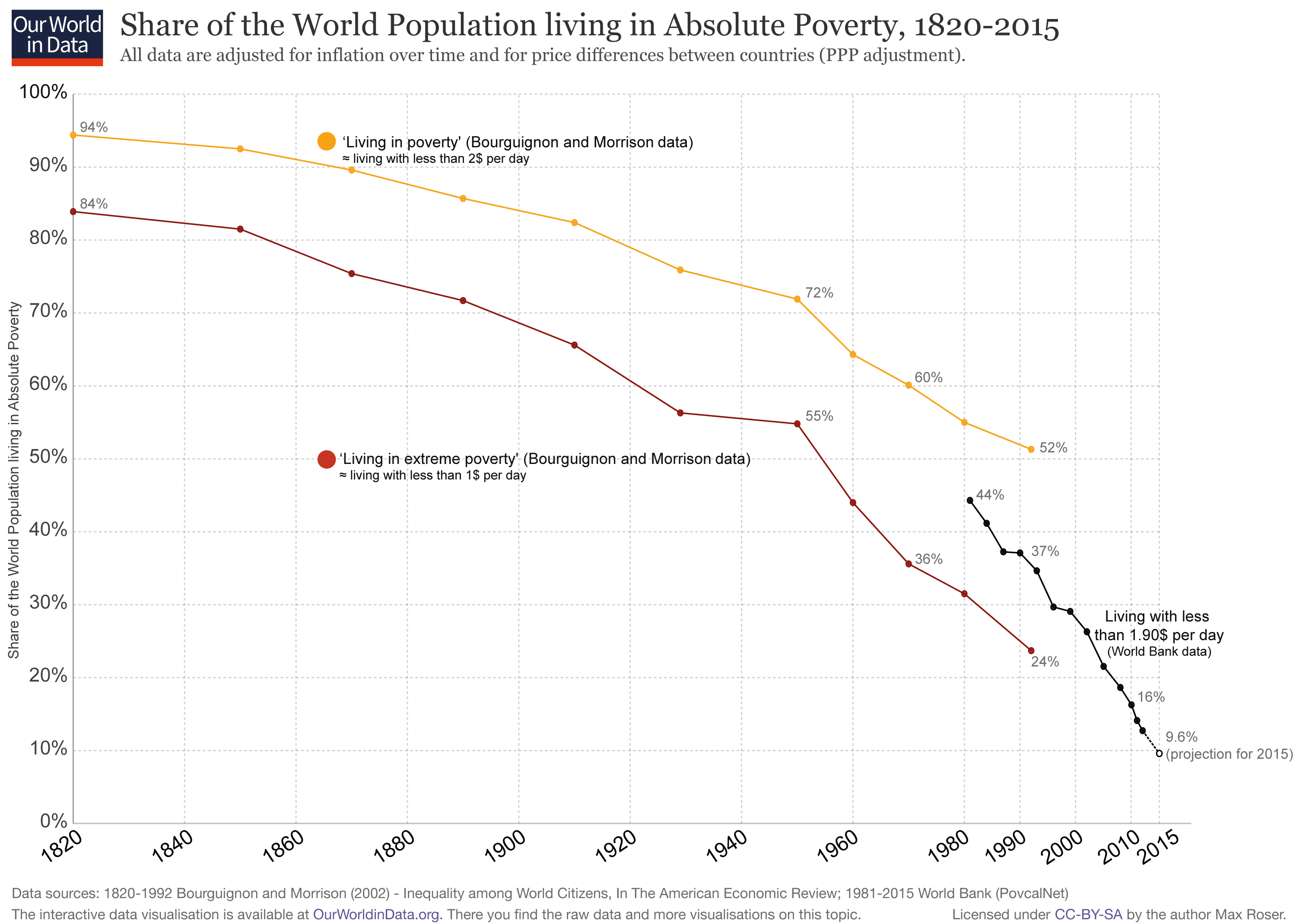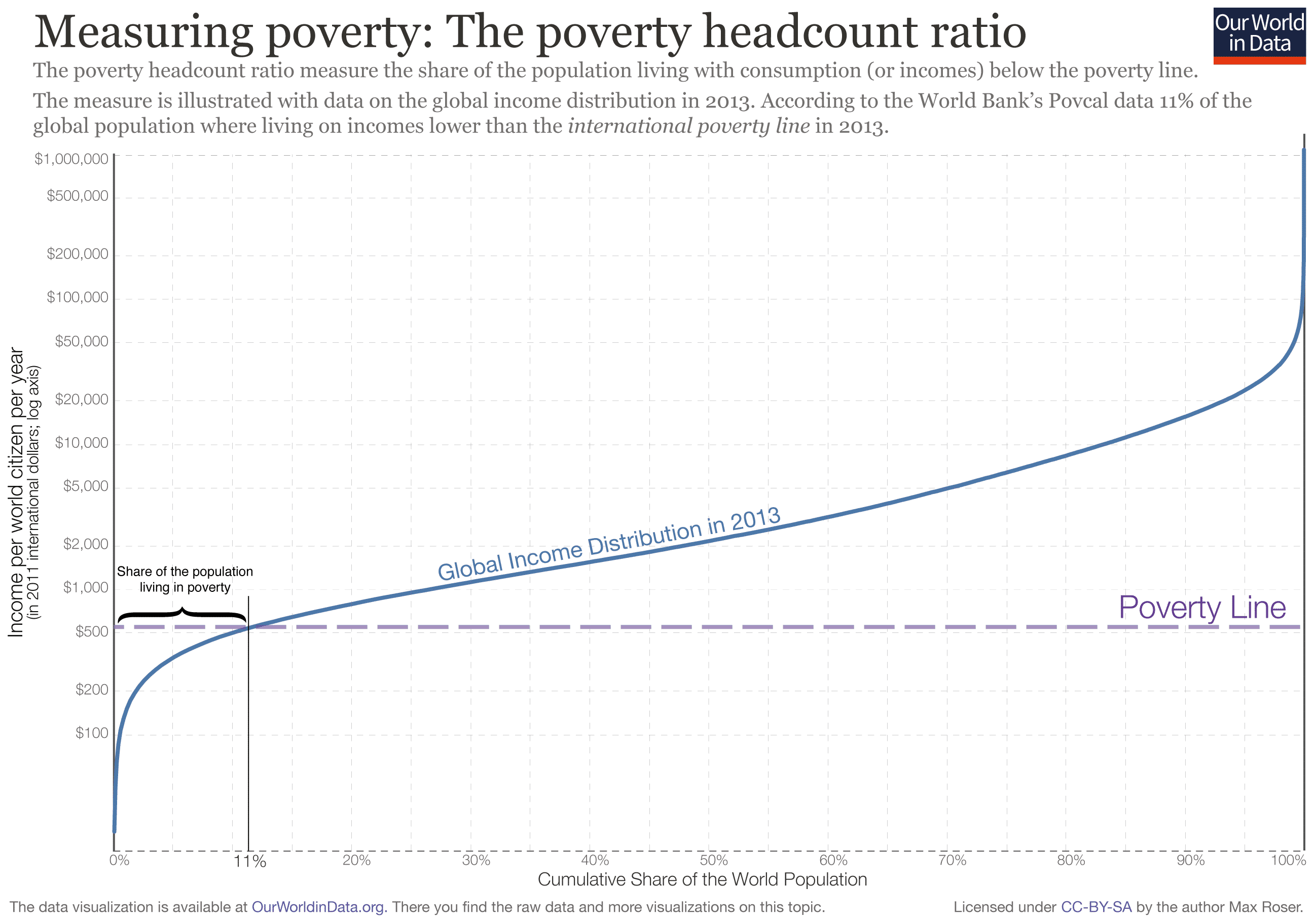- In 2013, 11.2% of the world population had a daily income of less than $1.90 (WB)
- In 2013, 48.7% of the world population had a daily income of less than $5.50 (WB)
- In 2015, 736 million people lived on less than $1.90 a day, down from 1.85 billion in 1990 (WB)
- According to UN report of 2010, there are 925 million people who do not have enough to eat and 98 percent of them live in developing countries. (Source: FAO news release, 14 September 2010)
- The wealthiest 1% of the global population, own 45 percent of the world’s wealth. (inequality.org)
- The richest 26 people on the planet own as much as the 3.8 billion people who comprise the poorest 50% of the global population. (Oxfam)
- Over 50% of the global poor now live in Sub-Saharan Africa, where the number living in extreme poverty (less than $1.90) is 413 million.
- If current trends continue, by 2030, 90% of the global poor will live in Sub-Saharan Africa.
- The main causes of poverty are – living in rural areas, working in agriculture, living in a poor region.
- In 2015, the World Bank raised the threshold of extreme poverty from $1.25 a day to $1.90. The reason is that US prices rose faster than local prices. The dollar value of $1.90 better reflects the prices people pay in local areas. $1.90 in 2011 buys approximately the same things as $1.25 did in 2005 in poor countries, (WB)
Fall in poverty
Extreme Global poverty, defined as an income of less than $1.90 a day, has fallen from over 40% of the global population in 1981 to 10% of the global population in 2015.

However, the fall has been concentrated in Asia and Latin America.
Countries with highest levels of extreme poverty include Malawi, Mozambique and Zambia.

Source: World Bank – Headcount ratio of $1.90 (note some countries do not return statistics)
The link between income levels and reported levels of satisfaction often varies

Cambodia and Bangladesh have similar low-income levels to Rwanda and Benin, but Bangladesh reports dissatisfaction of 18% compared to over 70% in Benin. This show many other factors affect living standards apart from reported income levels.
Share of the world population living in absolute poverty 1820-2015
This shows that poverty was the norm – for more than 90% of the population. In 1820, researches estimate that 94% of the world population was living under our terms of absolute poverty (less than $2 a day)

Absolute poverty levels have fallen considerably since 1820 – with a sharp fall in the post-war period.
Source: OurWorldinData
In 2015, 736 million people lived on less than $1.90 a day, down from 1.85 billion in 1990.
Poverty headcount ratio
This measures the share of the population living with income levels below the poverty line.

Source: OurWorldinData
A 2019 report by Oxford stated that the 26 richest billionaires own as many assets as the 3.8 billion people (50% of the world population) (link)
Related
